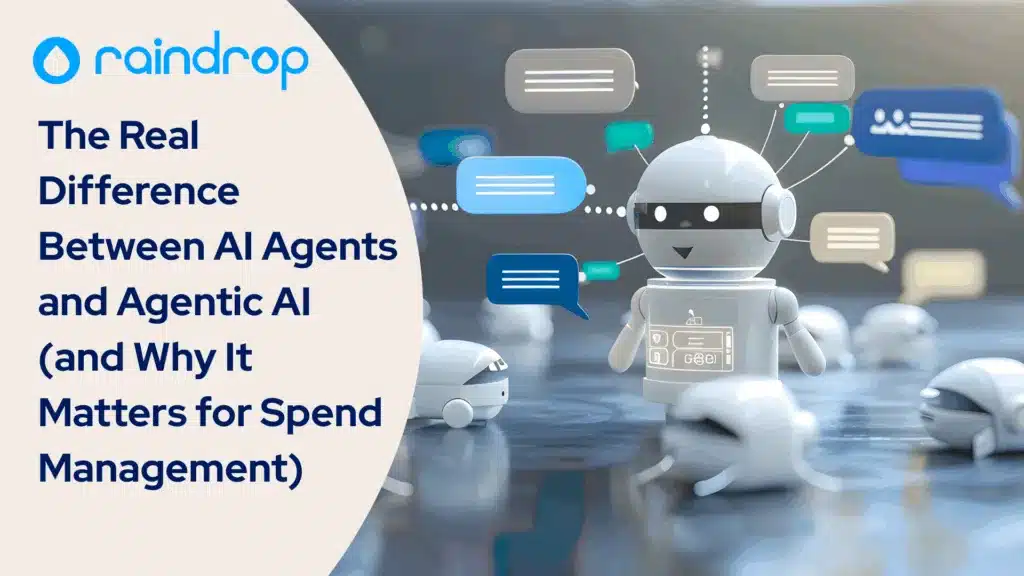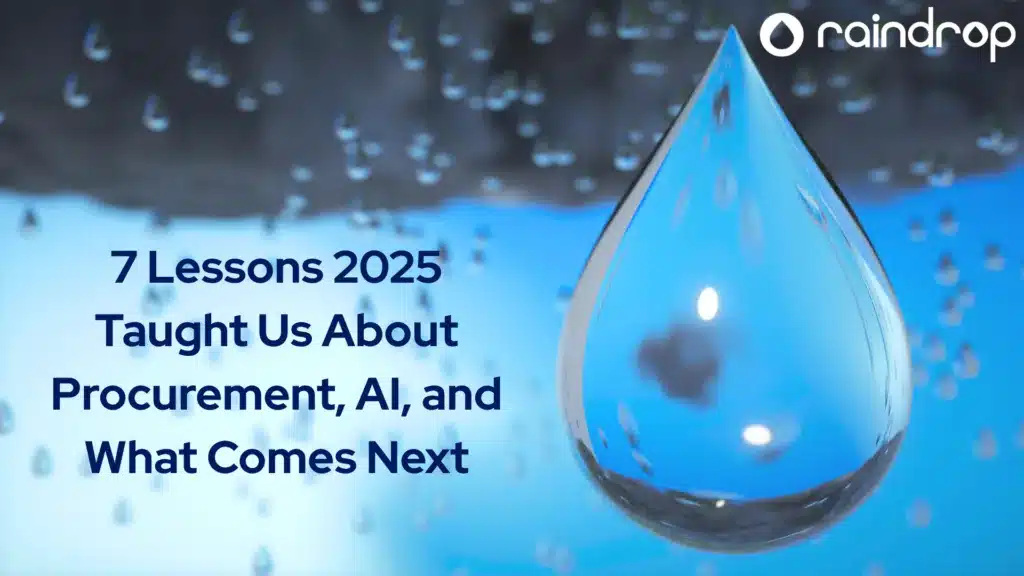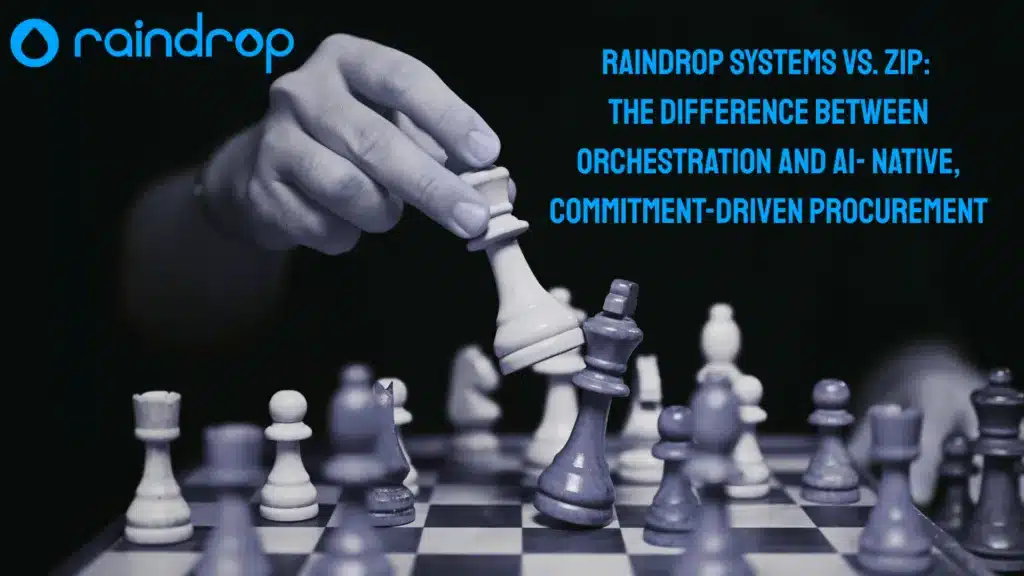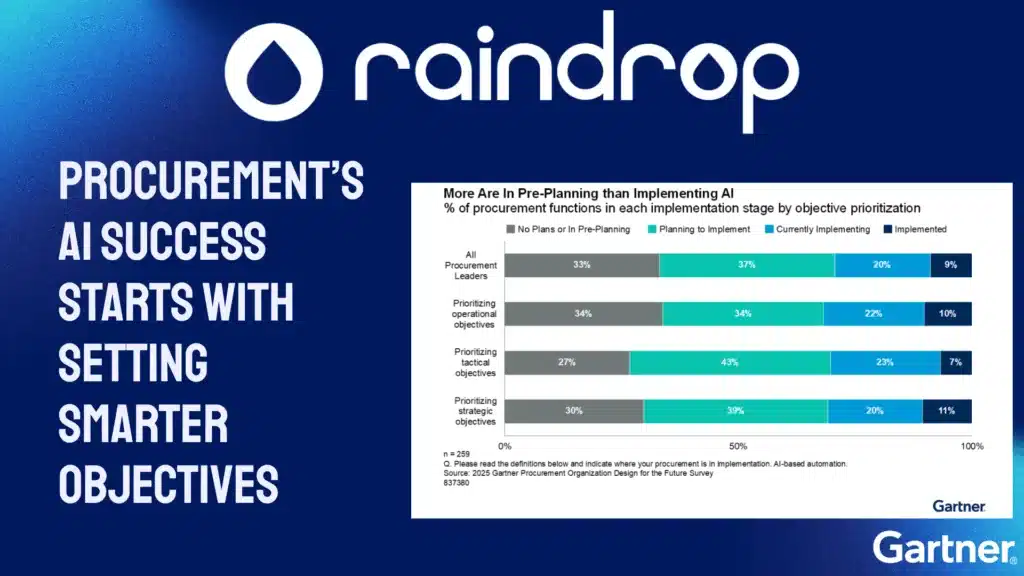The Real Difference Between AI Agents and Agentic AI (and why it matters for spend management)
The latest wave of AI for finance and procurement says it can flag risks, analyze contracts, and surface spend leaks before your morning coffee gets cold. But often, the reality is a long list of auto-generated suggestions that miss the context your team knows by heart. Meanwhile, every demo promises “agentic intelligence” that handles the heavy lifting — until you realize nobody can explain why it made the choices it did.


As the chase for smarter automation accelerates, leaders are left with a bigger question: When should you trust an AI agent to take action, and when do you need clear rules, transparency, and human direction, especially when audits and compliance are on the line?
Let’s break down what matters most: how “AI agents” work in practice, what “agentic AI” really means, and why a deterministic approach gives finance and procurement teams more control, more accuracy, and fewer surprises.
How Finance Teams Gain from Smarter AI
1. Fraud detection with context
Most teams can’t manually review every transaction — there’s too much volume, too much noise. This is where machine learning shines: AI systems get better over time, learning to spot patterns and adapt as fraudsters invent new tricks. AI can scan for oddities (like duplicate invoices or suspicious timing between related payments). But the real value comes when the system highlights outliers with supporting details, so a reviewer can make a quick, informed call instead of launching into a wild goose chase.
2. Contract and supplier risk — surfacing what matters
Procurement professionals know that one buried clause or missed change in a supplier agreement can mean costly surprises later. AI tools can scan contracts for specific language, compare supplier terms, and flag mismatches between old and new agreements. Instead of relying on memory or spot checks, you see exactly which areas need review and why.
3. Summarization — action-ready insights from long documents
RFPs, legal docs, and compliance updates rarely arrive as tidy bullet points. AI makes it possible to turn 40-page PDFs into clear, section-by-section highlights. This means teams get to the heart of a document in minutes, route it for approvals faster, and spend less time chasing down key details.
What does this look like in practice? Meetings are shorter because the facts are clear. Risk reviews catch more issues before they’re expensive. Approvals move with less back-and-forth. Teams get to use their expertise where it matters — investigating, negotiating, or advising — because the grunt work is finally automated.
What's Behind Today's New Wave of AI "Agents"?
Assistants aren’t new to business software, but their role has changed dramatically in the last decade. The earliest assistants were little more than scripted guides. These tools walked users through processes step by step — think of the classic “wizard” that prompted you to fill in forms or select from menus, always following the same script.
As technology advanced, the next generation of agents became responsive assistants. These systems could react to user choices, answer questions, and offer help based on live data. For example, an email filter that learned to spot spam over time or a dashboard that highlighted out-of-policy spend as it appeared.
Today, AI agents are beginning to operate with a higher degree of autonomy. The most advanced systems — described as “agentic” — are designed to initiate tasks without waiting for a user’s direct command based on your organization’s goals or desired outcomes. They might reorder inventory when stock runs low, start negotiating a contract based on pre-set terms, or escalate a supplier risk issue after detecting outlier data in real time.
To see how far things have come, consider a few examples:
- Early: A procurement platform includes a guided form for onboarding suppliers, providing the same prompts to every user, every time.
- Responsive: The platform flags a suspicious invoice based on patterns it has learned from your company’s history.
- Agentic: The system detects that a supplier’s compliance certification is about to expire, automatically requests updated documents, and blocks new orders until the paperwork is complete.
With each step, finance and procurement teams have seen real changes. Early agents kept everyone on the same process. Later, smarter tools helped teams catch mistakes and spot issues faster. Now, some software can make routine choices without being asked.
As soon as software starts making decisions, you need clear guidelines for what it can act on. Set up audit trails, review their output regularly, and step in quickly if you spot results that don’t align with your standards or goals.
And the pace is picking up. According to Gartner, agentic AI is forecast to be the most crucial strategic technology for 2025 and beyond.
By 2028, about 15% of daily work decisions are expected to be handled autonomously, up from nearly zero in 2024. It’s also projected that 33% of enterprise software apps will embed agentic AI by 2028.
That means these autonomous systems are moving from pilot projects into the mainstream, with real impact on how teams operate and make decisions.
Raindrop is recognized for its leadership and staying power in this space. Our platform appears in the Gartner Hype Cycle for Procurement and Sourcing Solutions for the fourth consecutive year and is named a leader in the IDC Marketscape for Source-to-Pay (S2P). For finance and procurement teams, this means Raindrop isn’t just following trends, it’s setting them, earning independent validation for delivering reliable, modern AI that fits real business needs.
What "Agentic" promises, and what actually works
There’s a big difference between “agentic” AI and focusing on deterministic outcomes that teams use for real control.
Agentic AI is built to reason and act on your behalf. If you set it up with the right signals, it might decide to place an order when supplies hit a threshold, update terms in a contract, or approve a payment — sometimes without any human input. In practice, this means the system is making choices for you, based on a model that you hopefully trained, even if you haven’t told it exactly what to do each time.
As Raindrop is on a path to true agentic agents, we’re working closely with our customers to understand what use cases really make sense. Right now, we’re focusing on deterministic outcomes where you decide what outcome you want, and the system delivers it with full transparency:
- Ask for a draft contract, and it pulls from your approved templates and prior agreements, so you know where every clause came from.
- Ask to make a purchase, and it checks past transactions, current pricing, contract terms, and benchmarks, then gives you a clear approval path.
- Every result is traceable: you see what data was used, what logic was applied, and where the key decisions happened.
The result is predictable, auditable, and fully documented. You keep oversight, with no surprises and no black boxes. This is critical for finance and procurement, where compliance and trust aren’t optional.
Raindrop's Model: AI that works for finance and procurement
Not every system that promises “autonomous agents” delivers real value. Many are still little more than flashy demos. Raindrop takes a different approach: everything rests on a stable platform, so AI features extend what already works.
Here’s how it plays out.
Instead of asking users to pick from a menu of AI functions or guess which tool to use, Raindrop just gives you one place to start. A master agent — the supervisor — figures out which specialized AI agent should handle each request, whether it’s:
- Drafting a contract
- Running a spend analysis
- Routing an approval
You don’t have to understand the technical details; you just describe your goal, and the system gets it done, following the rules, audit paths, and processes you’ve already set.
The priority is always the same: clarity and reliability. Every action is visible, traceable, and tied to your organization’s standards — not just whatever an algorithm decides is “good enough.” Routine tasks are handled in the background, so teams spend more time on real decisions and less on admin.
And now is the time to start thinking about it – By 2028, Gartner predicts that 33% of enterprise software applications will include agentic AI, up from less than 1% in 2024, with at least 15% of day-to-day work decisions being made autonomously through AI agents.
Ready to see how AI can simplify your day-to-day? Connect with the Raindrop team to see what’s possible, or request a personalized walkthrough of how an AI-powered platform for S2P can deliver value to you now, not a hyped up promise based on the latest buzzwords.






